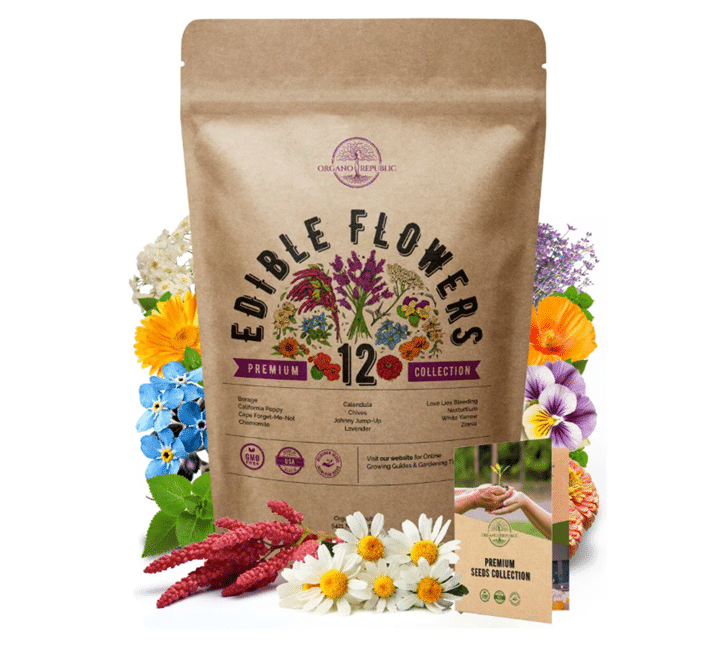Table of Contents
Harvesting and storing your herb seeds is a rewarding process that allows you to maintain a continuous supply of your favorite herbs while also saving money. This guide will walk you through the steps of harvesting and storing herb seeds, ensuring they remain viable for future planting seasons. For purchasing seeds online visit Organo Republic.
Why Harvest and Store Herb Seeds?
- Cost Savings: Save money by reusing seeds from your current plants.
- Sustainability: Reduce waste and contribute to sustainable gardening practices.
- Customization: Preserve unique plant varieties and traits that work well in your garden.
Choosing the Right Time to Harvest Seeds
Seeds should be harvested when they are fully mature. This is typically when the seed heads or pods have dried out and turned brown but before they start to disperse naturally.
Season
Most herbs will produce seeds towards the end of their growing season. Keep an eye on your plants as they flower and begin to set seeds.
Tools and Supplies Needed
- Clean scissors or pruning shears
- Paper bags or envelopes
- Labels and markers
- Drying screens or trays
- Airtight containers (e.g., glass jars with tight-fitting lids)
Steps for Harvesting Herb Seeds
Look for seed heads or pods that are dry and brown. Examples include the flower heads of basil, dill, and cilantro, or the seed pods of beans and peas.
Collect the Seeds
Use clean scissors or pruning shears to cut the seed heads or pods from the plant. Place them in a paper bag or envelope to avoid losing any seeds during transport.
Dry the Seeds
Spread the seed heads or pods in a single layer on a drying screen or tray. Place them in a well-ventilated, dry area away from direct sunlight. Allow them to dry completely, which may take one to two weeks.
Extract the Seeds
Once the seed heads or pods are fully dry, gently crush them to release the seeds. Use your fingers or a small tool to separate the seeds from the chaff (the non-seed material).
Clean the Seeds
Remove any remaining debris by winnowing the seeds. Pour the seeds between two containers in front of a gentle fan or breeze. The lighter chaff will blow away, leaving the heavier seeds behind.
Storing Your Herb Seeds
Place the cleaned seeds in labeled envelopes or small paper bags. Include the herb name, variety, and date of harvest on each label.
Choose Storage Containers
Transfer the labeled envelopes or bags to airtight containers. Glass jars with tight-fitting lids work well to keep moisture and pests out.
Ideal Storage Conditions
Store the containers in a cool, dark, and dry location. An ideal storage area should maintain a consistent temperature of around 40-50°F (4-10°C) with low humidity. A refrigerator can be a good option if space allows.
Monitor Stored Seeds
Check your stored seeds periodically to ensure they remain dry and free from mold or pests. Discard any seeds that show signs of damage or contamination.
Testing Seed Viability
To ensure your stored seeds remain viable, perform a germination test before planting:
- Dampen: Moisten a paper towel and place 10 seeds on it.
- Wrap: Fold the paper towel over the seeds and place it in a plastic bag.
- Wait: Keep the bag in a warm location and check for germination after a week.
- Calculate: Count how many seeds have sprouted. A germination rate above 70% indicates good viability.
Common Herbs and Their Seed-Harvesting Tips
The next tips will help you harvest herbs.
Basil
- When to Harvest: After flowering the flower heads turn brown and dry.
- How to Extract: Gently rub the flower heads to release the small black seeds.
Cilantro (Coriander)
- When to Harvest: When the seed heads turn brown and start to crack open.
- How to Extract: Cut the seed heads and place them in a paper bag. Shake the bag to release the seeds.
Dill
- When to Harvest: When the seed heads turn brown and dry.
- How to Extract: Cut the seed heads and dry them upside down in a paper bag. Shake the bag to collect the seeds.
Parsley
- When to Harvest: After flowering the seed heads turn brown and dry.
- How to Extract: Cut the seed heads and dry them on a screen. Rub the heads to release the seeds.
Mint
- When to Harvest: When the flower spikes turn brown and dry.
- How to Extract: Strip the dry flower spikes to release the tiny seeds.
Conclusion
Harvesting and storing your herb seeds is an excellent way to ensure a continuous supply of your favorite herbs while promoting sustainability in your gardening practices. By following these steps, you can successfully save and store seeds for future planting seasons, ensuring healthy and vibrant herb gardens year after year.

